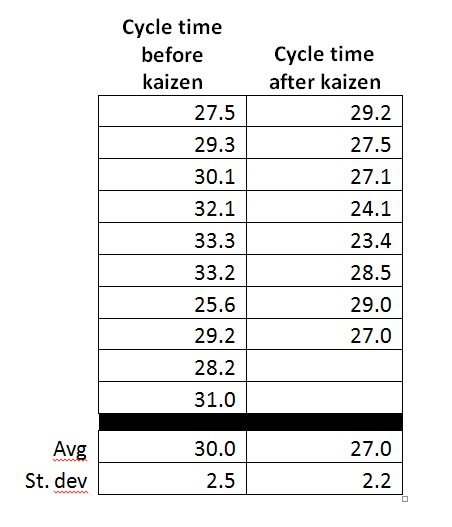Articles
Demand Segmentation Graph
An interesting pattern often emerges when you graph the coefficient of variation (Cv) vs. volume of a process time series.
Value Stream Map Lead Time Q&A
Recently a reader posed the following value stream mapping lead time related question(s). My experience, after facilitating more value stream mapping activities than I care to remember, is that it's not an uncommon question. In fact, it's a very good question.
I provided a quick answer...supplemented by a very sophisticated graphic (recently enhanced, in red, based on a comment from Sandor).
Summation notation and sizing the kanban bus route
Σ or Sigma is the Greek upper case capital letter S and is used in mathematics to represent summation or addition of a series of elements or set of data values.
x1, x2, x3, ... xn is a set of numbers. x1 is the first number in the set, xi is the 'i'th number, xn is the last of n numbers.
Elements can be simply adding up a set, or more involved such as summing squares or other algebraic equations.
Square root law of inventory - application
Haruhiko 'Harry' Matsumura wrote a comment "Hi, Sirs, Regarding square root law of inventory, I prepared a useful kaizen proposal paper to give my clients to address stock reduction by means of location."
Machine Cycle Time
Machine cycle time (Tcm) represents the actual time it takes for one machine to complete all of its operations on one piece, product, patient, file, etc.
Every Part Every Interval (EPEI)
Every Part Every Interval, also known as EPEI or EPEx, represents the frequency that different parts are produced or services provided within a fixed repeating schedule. This fixed repeating schedule is often graphically portrayed, for training purposes and as a scheduling visual control, as a wheel, with the different products represented by alphas (A, B, C…) and the wheel indexed clockwise to follow the intended sequence.


